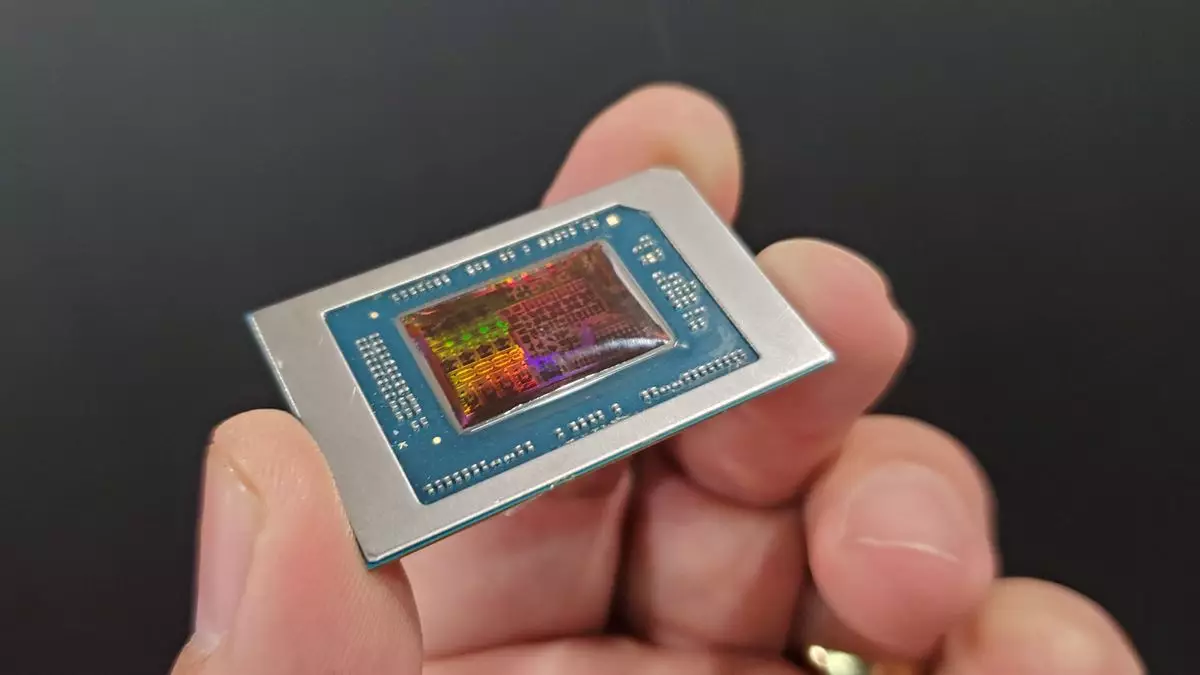AMD is making waves in the computing world with its upcoming Strix Point APU. This innovative chip doesn’t just cater to the standard laptop or handheld markets, but it could redefine the landscape for mini PCs as well. Conceived for high-efficiency demands, Strix Point promises an experiential leap, blending powerful computational capabilities with the flexibility that modern users seek. This is not just a small chip; it represents a shift towards a new paradigm where power and portability coexist seamlessly.
Exploring the Strix Point Architecture
What sets the Strix Point APU apart is its architectural prowess. Featuring a hybrid setup of 12 Zen 5 CPU cores—four robust Zen 5 cores combined with eight compact Zen 5c cores—this APU suggests a focused design catering to multitasking and efficient processing. On the graphical front, the inclusion of 16 RDNA 3.5 compute units indicates that users can expect exceptional graphical performance and improved overall efficiency.
An exciting addition is the built-in NPU (Neural Processing Unit) rated at 55 TOPS, which signals AMD’s commitment to embedding artificial intelligence capabilities deeply into their products. This means that users could engage with applications requiring machine learning or intensive data processing at an unprecedented scale, right from their compact devices.
AMD’s Strategic Branding and Positioning
AMD’s strategy seemingly leans towards consumer clarity and market appeal as they prepare to unveil the desktop version of Strix Point, tentatively branded as Ryzen 9000G. There’s speculation that the branding may incorporate AI, potentially becoming Ryzen AI 9000G. This kind of nomenclature doesn’t just highlight technological advancement but also sends a strong market signal that AMD is serious about leaning into future technologies.
Moreover, leveraging the existing AM5 socket for compatibility underscores AMD’s dedication to creating a unified ecosystem for their users. Gamers and hardcore PC enthusiasts often require hardware that’s not just powerful but also adaptable. By ensuring Strix Point can slot into a wide range of existing motherboards, AMD is not just selling a chip; they are selling the promise of an easy upgrade path for consumers with legacy hardware.
Realistic Performance Expectations
Some expectations need to be tempered, though. While Strix Point holds immense possibilities, it’s crucial to recognize the realms where it excels and where it may falter. It won’t necessarily rival high-end dedicated CPU-GPU systems in performance benchmarks, especially in scenarios demanding utmost graphical fidelity. For hardcore gaming or intensive graphical workloads, enthusiasts may still gravitate towards traditional setups.
However, as a chip designed for compact, economy-focused builds like mini PCs, Strix Point stands out. Systems like the Ayaneo Retro Mini PC AM01S will likely leverage the chip’s attributes perfectly, offering consumers a powerful option for on-the-go computing or space-constrained environments. The promise of performance, legitimized by projected lower costs compared to mobile variants, positions the Strix Point as an appealing choice among budget-conscious users.
The Market Impact of AMD’s Strix Point
The implications of Strix Point on the overall market landscape are profound. As laptops evolve to prioritize power efficiency alongside performance, AMD’s latest innovation could serve as a catalyst for change. Strix Point’s introduction could compel rival manufacturers to similarly innovate, creating a feedback loop that drives technological progress throughout the industry.
This APU doesn’t just fill a gap; it creates an entirely new category of computing experience. By focusing on compact and efficient designs, AMD is addressing a growing market of users who require flexibility without sacrificing the essentials of robust performance. The potential for applications in a variety of fields—gaming, content creation, and portable computing—cannot be overlooked.
The exciting trajectory of AMD’s Strix Point APU reveals not only the vision behind advanced chip design but also a recognition of evolving consumer behaviors. As the line between traditional desktops and mobile computing continues to blur, AMD’s innovation could very well shape the future of computing in compact form factors.

